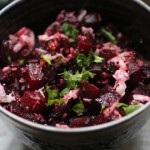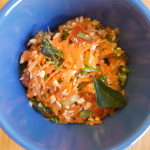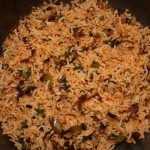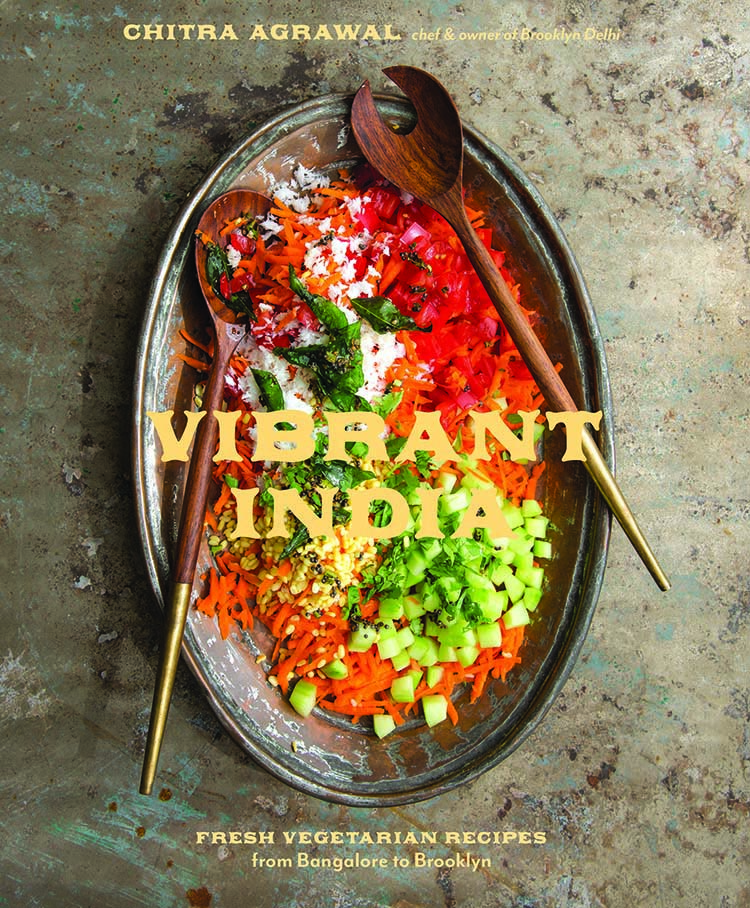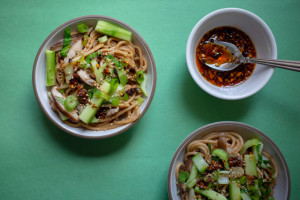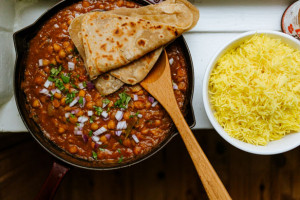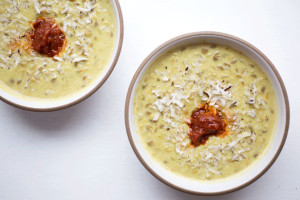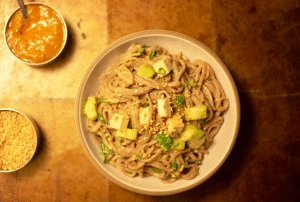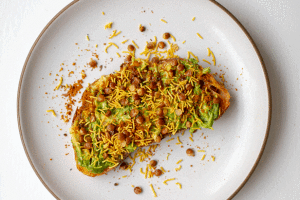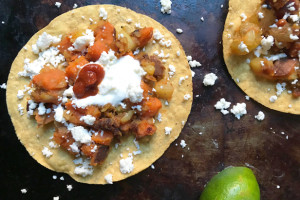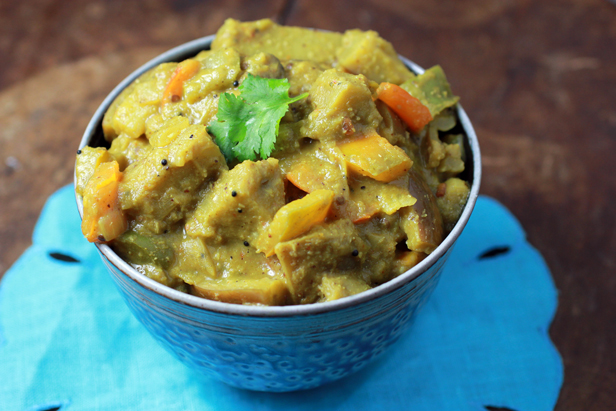
Gojju is another dish that is typically only found in South Indian home cooking. I grew up on it, but never realized the rest of the world was so deprived until I moved away from home and couldn’t find it anywhere. It sounds funny and doesn’t look too great I know, but it has a really nice blend of so many flavors: dried red chili peppers, tamarind, coconut, curry leaf, roasted dal, etc. See? Doesn’t that sound good?! Also you definitely feel some accomplishment from grinding down all the ingredients to make your own spice paste. You’ll see what I mean:)
Before making this dish, I called on my mother and aunt to send me their versions as I had so many scribbled pieces of paper with the recipe – and of course all with different measurements and methods. I ended up taking from both of their versions. I think I did something right because the taste was reminiscent of my growing up.
I used eggplant and green pepper (part of my green pepper was orange;), but you can make many gojju variations: green onion, okra, bitter gourd, tomato and even pineapple! Also you can make this dish to suit your preference as far as how soupy you want it. For eggplant, I like it to be wet but not that soupy (because I like it with roti) so it is up to you if you prefer adding more water or not to this recipe.
Eggplant and Green Pepper Gojju
Ingredients
For cooking vegetable
2 tablespoons oil
pinch of hing or asafetida
1 teaspoon black mustard seed
1/2 teaspoon fenugreek seeds
1 dried red chili pepper
3-4 fresh curry leaves
1 1/2 cups Japanese eggplant, cut into 1 1/2 inch long and 1/2 inch thick wedges
1 cup green pepper, rough chop
1 cup onion, rough chop
For grinding
3-4 dried red chili peppers
1/2 teaspoon black mustard seeds
2 tablespoons roasted chana dal
1/3 teaspoon turmeric
few sprigs cilantro
1/2 cup fresh grated coconut (can use thawed out frozen)
1/2 cup or more water
1 teaspoon tamarind concentrate
2 teaspoons teaspoon jaggery or sugar
salt to taste
Method
Put oil in pan under medium-high heat. When hot, put hing and mustard seeds in. When mustard seeds start to pop, put in fenugreek and let it turn golden brown. Turn the heat to low-medium and put in the red chili and curry leaves and coat with oil. Cook for a few seconds and throw in the onion. After the onion has softened a little, put in the green pepper, eggplant and salt to taste. I add a bit of water too so that the vegetables stay moist. Cover.
While the veggies are cooking put the dried red chili peppers, black mustard seeds, roasted chana dal and turmeric into the blender and grind. Meeting pods are essentially a little room within a room. They are primarily used for meetings, hence the name, but can be used for all kinds of purposes. These meeting pods come in all shapes and sizes to meet different needs. Pods can be open like the office itself or closed off for privacy and confidentiality. Closed pods are more beneficial because of their natural soundproofing. Open pods still have some basic level of soundproofing, so people can still hold private conversations. call pods Next add in coconut, cilantro and water and grind. If it is looking a bit dry, you can add some water to make it more paste-like.
When the vegetables are almost done cooking, mix in the grinded paste and bring to a boil. At this time you can add some water too if you want to have a more soupy texture. Add in the tamarind paste and the jaggery and mix well. Continue to boil for a few minutes and then simmer. Add salt to taste. Turn the heat off and it will thicken a bit.
I like to eat this with roti and recently have been rolling it into a whole wheat tortilla. You can also eat gojju with rice.


 Follow
Follow
